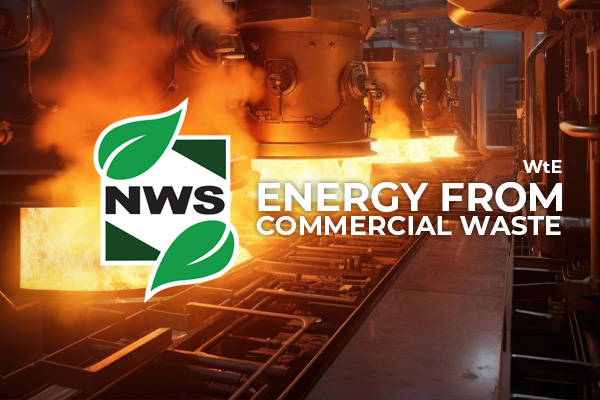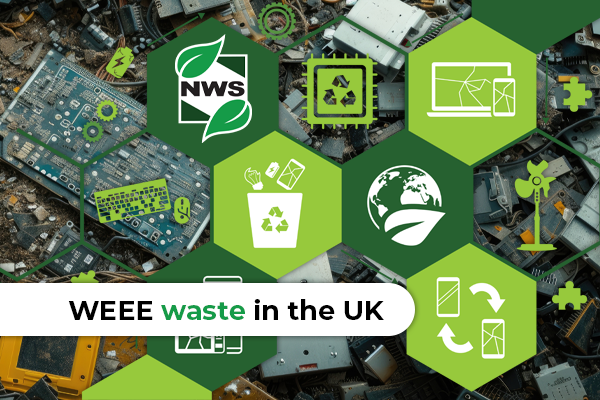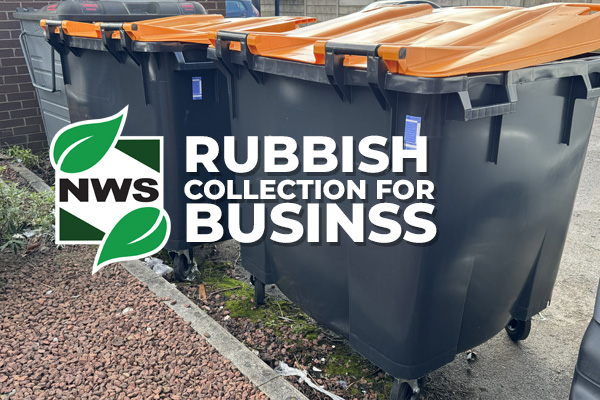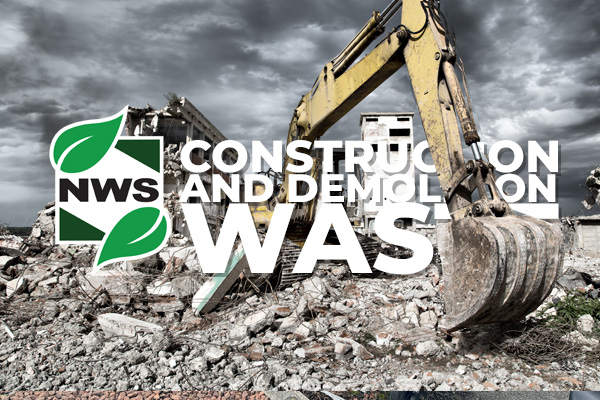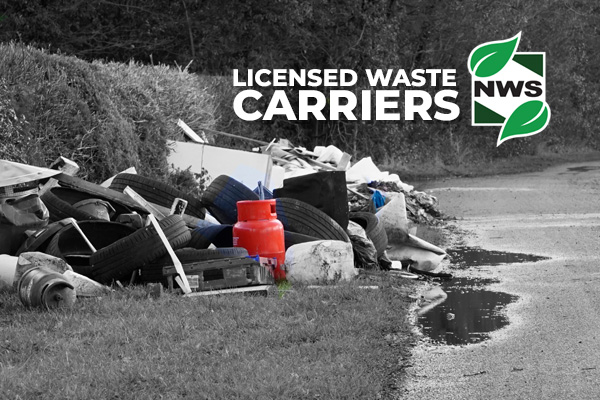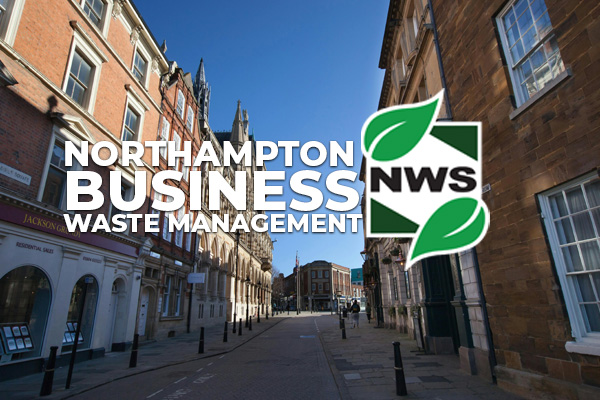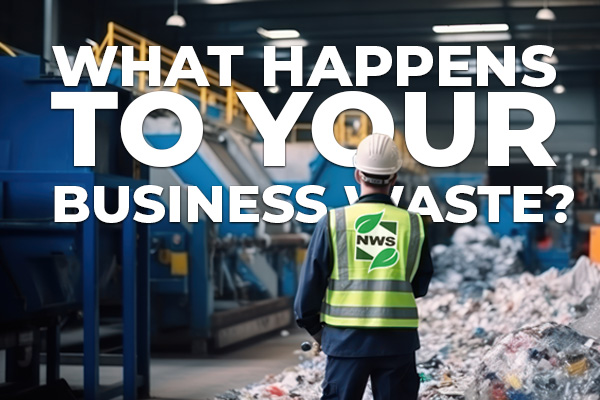Welcome to the comprehensive guide on managing business waste with a focus on cost-effectiveness, reduction, reuse, and recycling. As a business owner understanding the fundamentals of Cost-Effective Business Waste Management can not only benefit the environment but also contribute to your business profits.
Section 1: Understanding Business Waste
1.1 What Counts as Cost-Effective Business Waste?
Business waste includes any waste arising from commercial activities. This encompasses waste from daily operations, as well as specific sectors such as construction, demolition, industry, and agriculture.
1.2 Importance of Waste Reduction
Reducing waste should be your priority. It not only benefits the environment but also saves your business money in disposal costs. Consider the following tips:
Inventory Management: Monitor and adjust stock levels to minimise waste.
Effective inventory management is a crucial aspect of running a successful and sustainable business. By monitoring and adjusting stock levels, businesses can not only optimise their operations but also minimise waste. This is particularly important for business owners with a focus on cost-effectiveness and sustainability, as excess inventory can lead to increased waste and unnecessary expenses. Here’s a closer look at how inventory management contributes to waste minimization:
1. Regular Monitoring:
Regularly monitoring your inventory is the first step in waste minimisation. By keeping a close eye on stock levels, you gain insights into which products are moving quickly and which ones are not. This helps prevent overstocking items that may eventually become obsolete or perishable. Reducing oportunity of Cost-Effective Business Waste.
2. Demand Forecasting:
Implementing demand forecasting techniques enables you to anticipate customer needs accurately. By analysing historical sales data and market trends, you can make informed decisions about the quantities of products to order. This prevents the accumulation of excess inventory that might end up as waste.
3. Just-in-Time Inventory:
The just-in-time (JIT) inventory management approach involves ordering and receiving inventory only when it’s needed for production or to meet customer demand. This minimises the amount of excess stock on hand, reducing the risk of products becoming obsolete or reaching their expiration date.
4. Supplier Relationships:
Establishing strong relationships with suppliers is key to efficient inventory management. Communicate closely with your suppliers to ensure they understand your business’s demand patterns. This collaboration can lead to more accurate order fulfilment and reduce the likelihood of overstocking.
5. First-In, First-Out (FIFO) System:
Implementing a FIFO system ensures that older inventory is used or sold first, reducing the chances of products reaching their expiration date before being utilized. This principle is particularly relevant for businesses dealing with perishable goods.
6. Real-Time Tracking Systems:
Invest in modern inventory management systems that offer real-time tracking. These systems provide up-to-the-minute information on stock levels, helping you make timely decisions to prevent overstocking and reduce waste.
7. Promotions and Discounts:
Consider implementing promotions or discounts for slow-moving inventory. This can help clear out excess stock, minimize waste, and attract customers with special offers.
8. Employee Training:
Train your staff on the importance of efficient inventory management. Make them aware of the impact excess stock can have on waste levels and overall business sustainability. Encourage them to communicate any observed trends or issues with inventory levels.
9. Regular Reviews and Adjustments:
Conduct regular reviews of your inventory management practices. Analyse reports, adjust order quantities as needed, and refine your approach based on changing market conditions.
Effective inventory management is a powerful tool for waste minimization. By closely monitoring stock levels, implementing demand forecasting, and adopting efficient systems, businesses can reduce waste, optimize costs, and contribute to a more sustainable and environmentally friendly operation.
Digitalisation: Move towards paperless operations to increase Cost-Effective Business Waste.
In today’s modern business landscape, transitioning towards paperless operations is not only a technological upgrade but also a sustainable practice that contributes to waste reduction. For business owners with a focus on cost-effectiveness and environmental responsibility, the shift to digital processes offers numerous benefits. Here’s an exploration of the advantages and strategies for embracing digitalization to reduce office waste:
1. Document Digitisation:
Convert paper documents into digital formats through scanning or electronic documentation tools. This not only reduces the need for physical storage but also minimizes the creation of new paper waste.
2. Electronic Communication:
Encourage the use of electronic communication channels such as emails, instant messaging, and video conferencing. This reduces the reliance on paper-based communication methods, such as memos and letters, leading to a significant reduction in paper waste.
3. Digital Collaboration Platforms:
Implement digital collaboration platforms that allow team members to share and collaborate on documents in real-time. This eliminates the need for multiple printed copies, reduces errors, and streamlines workflow processes.
4. E-Signatures:
Adopt electronic signature solutions for document approvals and contracts. This eliminates the need for physical paperwork and expedites the approval process, saving time and resources.
5. Cloud-Based Storage:
Store documents and data in secure cloud-based systems instead of relying on physical filing cabinets. Cloud storage not only reduces the need for paper but also enhances accessibility and document retrieval efficiency.
6. Paperless Meetings:
Utilise digital tools for presentations, note-taking, and collaborative discussions during meetings. This eliminates the need for printed agendas, handouts, and meeting minutes, reducing paper waste generated during business gatherings.
7. Online Billing and Invoicing:
Transition to online billing and invoicing systems to reduce the need for paper invoices. Electronic billing not only saves paper but also streamlines financial processes and improves record-keeping accuracy.
8. Training and Documentation:
Move towards digital training materials and documentation. Utilize e-learning platforms, digital manuals, and interactive guides to reduce the production of printed training materials.
9. Employee Education:
Educate employees on the benefits of a paperless office and provide training on digital tools and practices. Foster a culture that values sustainability and encourages mindful consumption of resources.
10. Recycling Stations:
Implement recycling stations for any remaining paper waste that cannot be eliminated. Make it easy for employees to recycle by strategically placing recycling bins throughout the office.
11. Continuous Improvement:
Regularly assess and refine digital processes to identify areas for improvement. Monitor the impact of the digitalisation efforts on waste reduction and adjust as needed.
12. Cost Savings:
Aside from environmental benefits, the transition to a paperless office often results in cost savings related to paper procurement, printing equipment maintenance, and storage space.
Embracing digitalization to move towards a paperless office is a practical and sustainable approach for businesses seeking to reduce waste. Beyond the environmental advantages, the shift to digital processes enhances efficiency, collaboration, and overall operational effectiveness. By implementing these strategies, business owners can contribute to a greener future while optimizing their workflows.
Section 2: Cost-Effective Business Waste Minimisation Strategies
2.1 The Waste Hierarchy
- Follow the waste hierarchy – prevent, reuse, recycle, and recover. Implement these strategies to minimize waste:
- Prevention: Avoid unnecessary packaging and choose suppliers with minimal packaging.
- Reuse: Encourage the reuse of office supplies and equipment.
- Recycling: Set up recycling stations for paper, cardboard, plastic, and other recyclables.
2.2 Engage Employees
Educate your staff about the importance of waste reduction and involve them in identifying opportunities for improvement.
Section 3: Safe Storage and Handling
3.1 Sorting and Storing Waste
Properly categorise and store waste to ensure safety and compliance:
Segregation: Separate different types of waste to facilitate recycling.
Secure Storage: Prevent spillage and contamination by storing hazardous waste securely.
Section 4: Legal Obligations
4.1 Waste Transfer Notes
Complete a waste transfer note for each waste load leaving your premises. This legal document ensures proper tracking of waste and compliance with regulations.
4.2 Waste Carrier Registration
Verify that your waste carrier is registered to dispose of waste legally. Using unregistered carriers can lead to fines and environmental harm.
Section 5: Cost-Effective Business Waste Management
5.1 Disposing of Your Own Waste
If you regularly dispose of your own waste, register as a waste carrier. This can be a cost-effective option, provided you comply with legal requirements.
5.2 Waste Permit
Depending on your waste management activities, you may need a waste permit. Check local regulations and apply as necessary.
Section 6: Hazardous Waste Management
6.1 Identifying Hazardous Waste
Understand what constitutes hazardous waste and implement proper handling procedures.
Understanding Hazardous Waste in Business Operations: Key Considerations
Hazardous waste poses unique challenges to businesses, requiring careful management to ensure compliance with environmental regulations and the protection of human health and the environment. Business waste producers need to be aware of the types of hazardous waste they generate and understand key considerations for proper handling, disposal, and legal compliance.
What Constitutes Hazardous Waste:
Chemical Waste:
Products containing hazardous chemicals, such as solvents, paints, and cleaning agents, are common sources of hazardous waste. These substances can pose risks to human health and the environment if not handled properly.
Electronics and E-Waste:
Electronic devices and components often contain hazardous materials, including heavy metals like lead, mercury, and cadmium. Improper disposal of electronic waste can result in environmental contamination.
Batteries:
Batteries, especially rechargeable ones, can contain hazardous materials like lead, cadmium, and lithium. They should be disposed of separately from regular waste to prevent soil and water contamination.
Medical Waste:
Waste generated in healthcare settings, such as sharps, expired medications, and certain medical devices, is considered hazardous. Proper disposal is crucial to prevent the spread of infections and protect the environment.
Asbestos-Containing Materials:
Construction and demolition waste may include materials containing asbestos. Asbestos is a known carcinogen, and its proper removal and disposal are essential to prevent health risks.
Oil-Based Products:
Used oils, oil filters, and other oil-based products are considered hazardous waste. They can contaminate soil and water if not managed correctly.
Key Considerations for Hazardous Waste Management:
Identification and Classification:
Businesses must accurately identify and classify hazardous waste produced on their premises. This involves understanding the characteristics of the waste and referencing regulatory guidelines to determine its hazardous nature.
Proper Storage:
Hazardous waste must be stored in designated containers that are compatible with the waste type. Storage areas should be secure, well-ventilated, and equipped with proper signage to indicate the presence of hazardous materials.
Labelling and Documentation:
Properly label containers holding hazardous waste with information about the waste type and associated risks. Maintain accurate documentation, including waste manifests and records of disposal methods.
Training and Education:
Ensure that employees are trained on the identification, handling, and disposal of hazardous waste. This includes understanding emergency procedures in case of spills or accidents.
Waste Minimisation:
Implement practices to minimize the generation of hazardous waste where possible. This may involve adopting alternative materials, improving processes, or recycling certain hazardous components.
Compliance with Regulations:
Stay informed about local, national, and international regulations governing hazardous waste management. Non-compliance can result in legal penalties and reputational damage.
Hiring Licensed Waste Contractors:
Engage with licensed waste contractors for the proper disposal of hazardous waste. Verify that the chosen contractor has the necessary permits and follows environmentally sound disposal practices.
Emergency Response Plans:
Develop and communicate emergency response plans to address incidents involving hazardous waste. This includes procedures for containment, cleanup, and reporting.
Regular Audits and Inspections:
Conduct regular internal audits and inspections to ensure ongoing compliance with hazardous waste management practices. Identify areas for improvement and address any issues promptly.
Community and Environmental Impact:
Recognize the potential impact of hazardous waste on the surrounding community and the environment. Act responsibly to safeguard public health and ecosystems.
By incorporating these considerations into their waste management practices, businesses can mitigate the risks associated with hazardous waste and contribute to a safer, more sustainable operating environment. Prioritizing responsible waste management not only ensures compliance with regulations but also fosters a positive corporate image and demonstrates commitment to environmental stewardship.
6.2 Cost-Effective Hazardous Waste Disposal
Proper disposal of hazardous waste is a critical aspect of responsible business operations. Collaborating with specialized disposal services can offer cost-effective and environmentally sound solutions. Here’s an exploration of strategies to manage hazardous waste disposal efficiently while minimizing financial impact:
1. Consolidation and Volume Discounts:
Collaborate with other businesses in your vicinity or industry to consolidate hazardous waste shipments. Many disposal services offer volume discounts for larger quantities of waste. By combining shipments, businesses can collectively negotiate better rates.
2. Utilise Regional Hazardous Waste Facilities:
Take advantage of regional hazardous waste disposal facilities. These facilities are equipped to handle a variety of hazardous materials and may offer more competitive pricing than smaller, local services.
3. Waste-to-Energy Programs:
Explore waste-to-energy programs that convert certain types of hazardous waste into energy. Some facilities can extract energy from hazardous materials, offering an alternative to traditional Cost-Effective Business Waste Managementmethods.
4. Evaluate On-Site Treatment Options:
Consider on-site treatment options, such as neutralization or stabilization, for certain types of hazardous waste. Some disposal services provide mobile treatment units, reducing the need for transportation to off-site facilities.
5. Long-Term Service Contracts:
Negotiate long-term service contracts with hazardous waste disposal providers. Long-term agreements often come with discounted rates and provide stability in pricing over an extended period.
6. Choose Sustainable Disposal Methods:
Opt for disposal methods that are not only cost-effective but also environmentally sustainable. Some disposal services focus on sustainable practices, such as energy recovery or material recycling, which can contribute to cost savings over time.
7. Centralised Hazardous Waste Management:
Centralise hazardous Cost-Effective Business Waste Management within your organization to streamline processes. Designate specific personnel or teams responsible for waste identification, segregation, and coordination with disposal services. This centralized approach can improve efficiency and reduce costs.
8. Implement a Waste Reduction Plan:
Develop and implement a comprehensive waste reduction plan to minimize the generation of hazardous waste. By reducing the quantity of hazardous materials used or generated in your processes, you inherently lower disposal costs.
9. Stay Informed on Regulatory Changes:
Stay abreast of regulatory changes and developments in hazardous Cost-Effective Business Waste Management. Compliance with evolving regulations can prevent fines and legal issues that may arise from improper disposal practices.
10. Consider Off-Peak Disposal Times:
Inquire with disposal services about off-peak disposal times. Some providers may offer lower rates during periods of lower demand. Scheduling disposal during these times can result in cost savings.
11. Evaluate Waste Characterization:
Conduct a thorough waste characterization to accurately identify the types and quantities of hazardous waste generated. This knowledge allows for more precise negotiations with disposal services and ensures you’re not overpaying for services you don’t need.
12. Continuous Improvement:
Continuously evaluate and refine your hazardous waste management practices. Regularly assess the efficiency of disposal methods, explore new technologies, and seek feedback from disposal service providers to identify areas for improvement.
Section 7: Recycling Initiatives
7.1 Partnering with Recycling Services
Collaborate with local recycling services to responsibly dispose of recyclable materials.
7.2 Employee Training
Educating employees on the importance of recycling and providing clear guidelines on what can be recycled is essential for creating a sustainable workplace. Here’s a comprehensive guide on how to design and implement an effective employee education program:
Step 1: Assess Current Knowledge and Practices:
Conduct a survey or assessment to gauge the current knowledge and practices of employees regarding recycling. Understand their existing level of awareness and identify any common misconceptions or gaps in understanding.
Step 2: Customised Training Materials:
Develop customized training materials that cater to the specific needs and demographics of your workforce. This could include visual aids, brochures, posters, and digital content that clearly explain the importance of recycling and the specific guidelines for your workplace.
Step 3: Interactive Workshops and Training Sessions:
Organize interactive workshops and training sessions to engage employees directly. These sessions can include presentations, demonstrations, and hands-on activities to make the learning experience more memorable and impactful.
Step 4: Incorporate Real-World Examples:
Use real-world examples to illustrate the impact of recycling on the environment and the community. Share success stories of businesses that have effectively implemented recycling programs, emphasizing the positive outcomes.
Step 5: Demonstrate Sorting Techniques:
Provide practical demonstrations on proper waste sorting techniques. Show employees how to identify recyclable materials, separate them from general waste, and use designated recycling bins correctly. Hands-on learning is often more effective than theoretical instruction.
Step 6: Highlight Environmental Benefits:
Emphasize the environmental benefits of recycling, such as conserving natural resources, reducing energy consumption, and minimizing landfill waste. Help employees understand the broader impact of their recycling efforts on the planet. Promoting more Cost-Effective Business Waste Management.
Step 7: Connect to Corporate Sustainability Goals:
Align the recycling education program with your company’s overall sustainability goals. Demonstrate how individual recycling efforts contribute to the organization’s commitment to environmental responsibility and corporate citizenship.
Step 8: Create a Recycling Guide:
Develop a clear and concise recycling guide that outlines what can and cannot be recycled in your workplace. This guide should be easily accessible, distributed to all employees, and posted in common areas for quick reference.
Step 9: Use Multimedia Platforms:
Leverage multimedia platforms for education, such as creating video content or using digital screens in common areas to display recycling tips and information. Multimedia content can capture attention and enhance comprehension.
Step 10: Promote Ongoing Communication:
Establish channels for ongoing communication about recycling practices. This could include regular newsletters, email updates, or a dedicated section on the company intranet. Encourage employees to share their own recycling initiatives and success stories.
Step 11: Incorporate Incentives:
Introduce incentives to motivate employees to actively participate in recycling efforts. Recognize and reward individuals or teams who consistently follow recycling guidelines and contribute to waste reduction.
Step 12: Feedback and Improvement:
Solicit feedback from employees about the effectiveness of the education program. Use this feedback to make continuous improvements, addressing any challenges or concerns raised by staff members.
Step 13: Measure and Celebrate Success:
Implement metrics to measure the success of your recycling program over time. Celebrate achievements and milestones, recognizing the collective impact of employee efforts in creating a more sustainable workplace.
Conclusion
By following this comprehensive guide, you’ll be well-equipped to Cost-Effective Business Waste Management reduce environmental impact, and contribute to a sustainable future. Embrace the principles of waste reduction, reuse, and recycling to create a positive impact on both your business and the planet.

